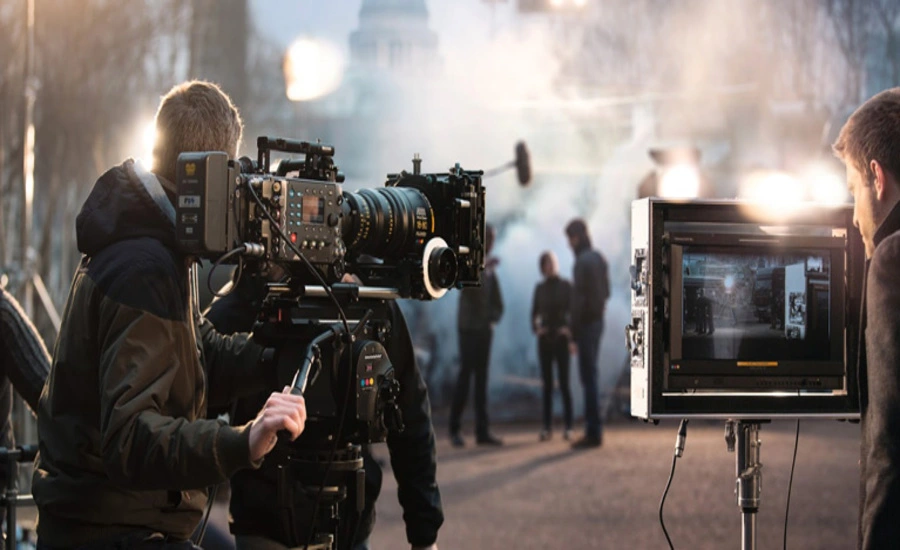Digital media has received a groundbreaking development through Face Swap technology, which enables users to easily exchange faces in photos and videos. Face replacement technology now allows users to substitute one person’s face with another between photos and videos. Advances in artificial intelligence (AI) technology and deep learning algorithms have made this technology more accessible to users while enabling new opportunities, but also creating new difficulties. Digital interfaces that apply Face swaps present a massive potential for future use in entertainment platforms and gaming applications, as well as social media tools. Much like another technological breakthrough, it creates privacy challenges as well as ethical concerns and possible misuse conditions.
Popular Face Swap applications emerge primarily from two factors: the availability of AI tools and the shared nature of social media challenges. Users can now make enjoyable digital material through these apps, yet the boundary between authentic experiences and artificial enhancements grows more indistinct each day. Knowledge about both face swap technology operations and the wider consequences remains crucial for understanding its implications.
Key Takeaways
- The artificial intelligence system known as Generative Adversarial Networks (GANs) drives Face Swap Technology to replace faces easily between images or video content.
- These digital tools enable diverse industries, from entertainment through social media to video games and marketing, to produce innovative content to personalize user experiences.
- As public awareness grows about the enhanced accessibility of this technology, multiple privacy concerns and identity threats have emerged along with deepfake risks for destructive activities.
- Face Swap technology ethics require that users acquire consent while maintaining responsible usage and preserving digital transparency in their media products.
- Advanced face swap software featuring SimSwap and DeepFaceLab delivers professional-level results to users at any skill level, yet demands ample computational resources along with experienced management practices.
- New technological advancements will require strong regulations together with advanced detection systems,m s which aim to minimize dangers produced by falsified media.
Understanding the Mechanics of Face Swap Technology
The fundamental operation of Face Swap technology uses advanced artificial intelligence algorithms to recognize, analyze, and transform facial characteristics. The mechanism uses Generative Adversarial Networks (GANs) as its foundation to create synthetic images that achieve realistic visual effects. GANs include two essential parts: the generator and the discriminator. The generator creates images as the discriminator performs assessments to guarantee they match the predefined criteria. By repeating this cyclical model, the AI program develops capabilities to produce facial images that look entirely authentic.
Face Swap uses the dedicated facial processing abilities of Convolutional Neural Networks (CNN) to identify features of eyes, nose, mouth, and jawlines. Primarily through recognizing significant facial landmarks, AI technology enables accurate alignment between two faces, which results in seamless swaps.
The AI technology maintains face swap capabilities through various adjustments, including lighting variance and skin color changes, as well as subtle facial expressions of the subject who receives the replacement. Through this process of face substitution, AI produces outcomes that appear so natural they deceive human perception.
Applications Across Industries
Entertainment and Media
The entertainment industry experiences a fundamental transformation through Face Swap technology in its visual effects creation. Through technological applications, actors have undergone digital age reductions to create realistic stunts with facsimiles that extend to bring deceased performers back for post-production work. In the making of Fast & Furious 7, the creators finished the scenes of Paul Walker using Face Swap technology following his sudden death. These examples demonstrated how the technology can enhance filmmaking while prompting diverse conversations on ethical matters regarding the use of deceased relevant features.
Face Swap technology serves several uses across television production and advertising, alongside the video game industry, to enable flexible storytelling experiences.
Social Media and Content Creation
Face Swap filters used across Snapchat, Instagram, TikTok, and other platforms have evolved into a major social trend. The platforms developed social media challenges that use face updating features between users and celebrities and non-social entities. Users responded enthusiastically to the Face Swap filter launch from Snapchat, which offered instant access to humorous and surreal content creation capabilities. Photo manipulation using this technology enables numerous users to create images that attract significant attention, whether they are comedic or surreal
Through the use of Face Swap tools, content creators and influencers develop eye-catching visuals to boost both audience retention and platform interaction. These digital tools nurture creative thinking while fostering audience engagement,, which prevents content from becoming stale.
Gaming and Virtual Reality
The gaming industry uses Face Swap technology as its main tool to boost player engagement and involvement in gaming environments. Today’s modern games let users build in-game avatars based on facial feature scans, which enhances the personal connection to the gaming experience. Virtual reality technologies enable players to step fully into real-life simulations, which detect their facial expressions, thus delivering heightened immersion and authentic interactions.
A virtual reality game lets you experience a dual connection to real-life emotions and virtual world interaction as your digital character shows facial expressions matching your natural responses. The integration of Face Swap technologies made this level of interaction feasible and otherwise impossible.
Advertising and Marketing
Brands,, alongside marketers use Face Swap tools to pioneer custom marketing promotions which target individual consumers. The technology enables companies to let customers view themselves experiencing products or using services during promotional campaigns. The added personalization creates a better consumer connection because people can see themselves connected to the brand message through this approach.
Face Swap enables users to submit personal photos, which they can exchange for public figures or fictional characters to market new products through interactive advertisements. The improved user experience and the increased social sharing are possible because people want to share their generated results with their network.
Ethical and Privacy Concerns
Face Swap technology demonstrates wide potential applications while generating substantial ethical dilemmas, which threaten user privacy. Deepfake technology stands out as the primary issue within Face Swap applications, which use altered videos and images to trick viewers about false information.
Misinformation and Manipulation
Security experts prioritize addressing the primary worry about Face Swap technology because it permits deepfake generation for propagating false information. Deepfake videos enable attackers to develop deceptive fake news products while mimicking public figures, which results in widespread public doubt and misinformation. Political campaigns have been manipulated through deepfake technology, which produces fake videos showing politicians making offensive statements while performing specific illegal deeds.
Digital manipulation of this type constitutes an immediate risk that challenges online content authenticity while diminishing public trust in digital media. Deepfake detection tools must become standardized because users require immediate access to authentication measures that validate digital materials before distribution.
Identity Theft and Privacy Violations
Face Swap generation capabilities create problems with personal information security and stolen identities. People whose images receive unauthorized manipulation in videos or images become victims of exploitation and defamation because of such digital abuse. The practice of using Face Swap tools frequently targets celebrities because creators generate explicit and harmful material, which damages their public image.
Users and developers must establish ethical practices along with obtaining explicit consent for using any person’s face in their content.
Legal and Regulatory Challenges
The increasing sophistication of Face Swap technology creates an urgent requirement for legal standards to control its operational boundaries. Jurisdictions across the world face the challenge of setting rules about deepfakes and facial manipulation technologies as they search for ways to support society’s innovation while protecting privacy rights. Several international governments, combined with regulatory bodies, are developing new legislation to stop unapproved image use while protecting creative freedom in entertainment and social media.
Guidelines for Responsible Use
The numerous advantages of Face Swap technology require users to practice responsible application of this technology. These guidelines address both users’ and developers’ behavior:
- Obtain Consent: Professional and personal settings require explicit permission to use another person’s likeness in face-swapping applications.
- Avoid Deceptive Practices: Face Swap tools should never be used to create deceptive content that threatens politics or attacks news commentators or specific people.
- Use Detection Tools: Develop AI detection technologies that identify manipulated content to stop deepfake exploitation attempts.
- Ensure Transparency: Synthetically generated media should receive explicit labels that reveal their artificial production.
Frequently Asked Questions (FAQs)
What is Face Swap technology?
Face Swap technology enables artificial intelligence (AI) to transform a person’s face into another one in video or photographic content. GANs, together with CNNs, work to create realistic face swaps through facial element recognition and alignment functionality.
Is Face Swap technology legal?
Face Swap technology exists as a lawful technology platform, yet its applications raise critical legal and ethical considerations about privacy and consent. When unauthorized content creation leads to unauthorized identification theft or misuse of someone’s image, it becomes illegal. It’s important to follow moral guidelines and felony frameworks when the use of the era.
How can Face Swap generation be utilized in entertainment?
In leisure, Face Swap generation is used to digitally de-age actors, create practical stunt doubles, and even recreate performances through deceased actors. This era has been hired in movies like Fast & Furious 7, wherein it helped finish scenes with Paul Walker after his passing.
Can Face Swap equipment be used on cellular devices?
Yes, numerous cell Face Swap packages, like the ones available on systems along with Snapchat or Instagram, allow customers to easily switch faces in snapshots or videos. More superior apps like MobileFSGAN also enable real-time face swapping directly on smartphones without requiring great computing power.
What are the ethical issues surrounding Face Swap technology?
Face Swap generation raises moral concerns related to privacy, misrepresentation, and deepfakes. The advent of deceptive content material or the unauthorized use of a person’s face for malicious purposes can lead to incorrect information, defamation, and identity theft. It’s vital to use this generation responsibly, ensuring consent and transparency.
Conclusion:
Face Swap generation is absolutely one of the most interesting developments within the realm of virtual manipulation and entertainment. Its capability packages in movie, social media, and gaming are tremendous and keep growing. However, as we keep exploring this virtual frontier, it’s vital to cope with the moral, privacy, and ethical considerations it affords.
By adhering to responsible practices, selling transparency, and using AI to stumble on fraudulent content, we are able to ensure that Face Swap remains a device for creativity as opposed to a weapon for deception. As this era evolves, it’ll continue to shape the manner we engage with digital media, however moral considerations and appreciation for personal privateness should manual its destiny.









